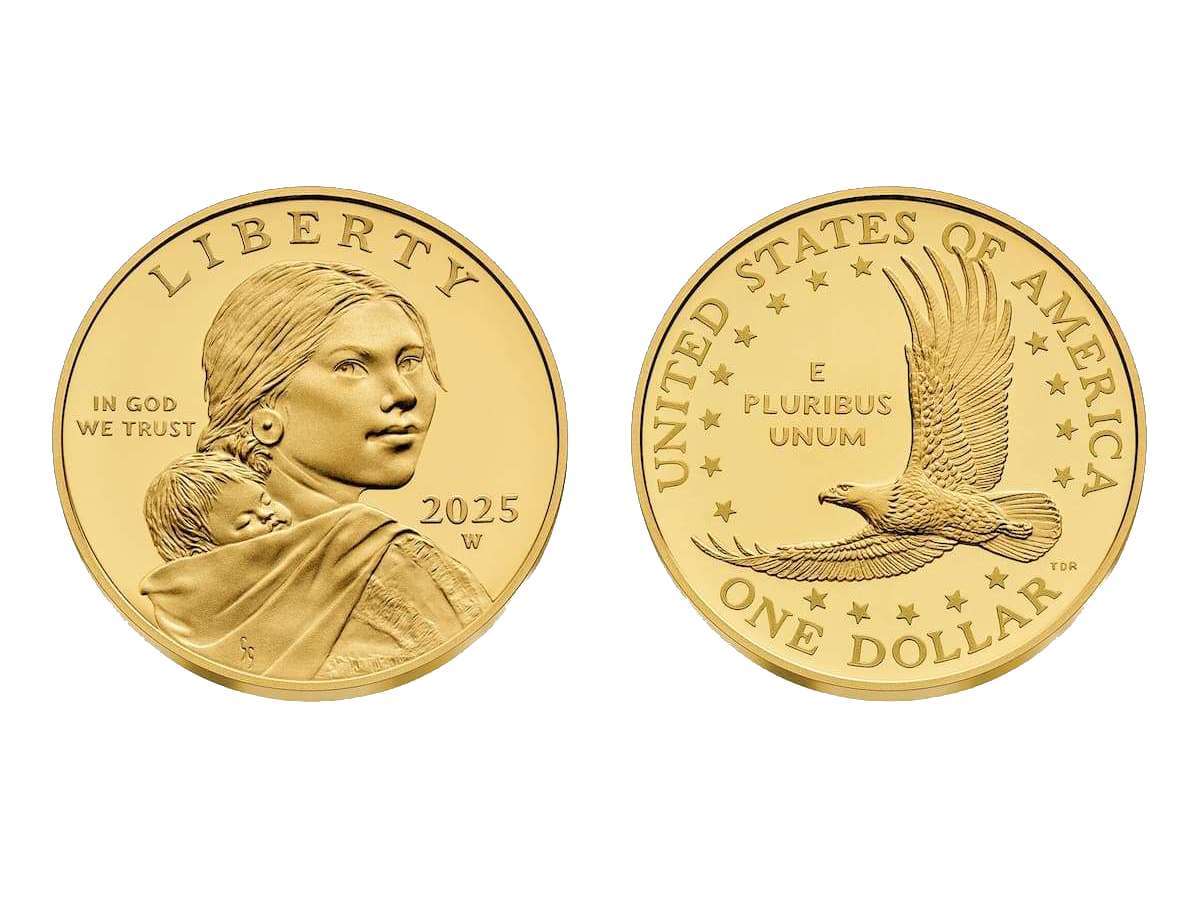
Sacagawea dollars (otherwise known as ‘golden dollars’ when first released in 2000) feature the young Shoshone Native American woman Sacagawea and her infant son, Jean Baptiste Charbonneau.
Sacagawea’s significance in American history is that of guide and translator for much of the Lewis and Clark Expedition of 1804 and 1805.
Glenna Goodacre designed the obverse portrait featuring the young Sacagawea.
About The Sacagawea Dollar Coin
Sacagawea dollars first came about as the demand for dollar coins rose during the mid-1990s.
The United States $1 Coin Act of 1997 authorized the production of a new dollar coin.
By the end of 1999, most the public became aware of the highly publicized image of Sacagawea carrying her son.
In fact, there was a nationwide promotion for the Sacagawea dollar. Even Cheerios chimed in on the action, offering a Sacagawea dollar coin in certain select boxes of the beloved cereal.
So Why Aren’t We Able To Find Sacagawea Dollars In Pocket Change?
As you’ve noticed by now, most people aren’t using the Sacagawea dollar in day-to-day transactions. Yet, the golden dollar was supposed to be a revolutionary coin that would prompt Americans to use a dollar coin.
So what happened?
Lots of factors got in the way of Americans using a dollar coin.
Probably the most important issues are:
- The dollar bill was still being made.
- Creatures of habit we are, we generally opted to use the dollar bill over the dollar coin since we still had the choice.
- Many people don’t like the heavier weight of the dollar coin versus the dollar bill.
- Too many coin-operated machines can’t accept dollar coins.
- Some cash tills and other coin containers and holders don’t have a convenient spot for dollar coins.
Nevertheless, the U.S. Treasury still continued trying to make the case that dollar coins were the way to go — and for good reason. It’s cheaper, in the long run, to make dollar coins rather than dollar bills.
Think of it this way:
- It costs around only 12 cents to make a dollar coin that lasts 30 years.
- We spend about 3 cents to produce dollar bills that have a lifespan of about 18 months.
See the benefit there in that math equation? Yep, we’d save hundreds of millions of dollars over a period of several years if we switched solely to making dollar coins.
What Makes The ‘Golden Dollar’ Golden?
Curious about what goes into making a golden dollar look that way? It’s a combination of a few metals, mainly copper.
- 88.5% copper
- 6% zinc
- 3.5% manganese
- 2% nickel
Quite a brew, huh?
How Many Sacagawea Dollars Have Been Made?
The bulk of the mintage of the Sacagawea dollar was predominately from the coin’s first 2 years: 2000 and 2001. By 2002, the U.S. Mint began reducing the number of Sacagawea dollars being made. By 2003, the coin was in production virtually just for the sake of inclusion in coin collectors’ coin sets.
Here’s a look at the approximate mintages from the first 5 years of the Sacagawea dollar, not including proofs:
- 2000 1.3 billion (yes, billion with a ‘B.’)
- 2001 133 million
- 2002 7.6 million
- 2003 6.2 million
- 2004 5.3 million
The Value Of Sacagawea Dollars
Though you probably don’t see Sacagawea dollars often… nothing about them is rare. And there are really no ‘valuable’ Sacagawea dollars — except for those which have been certified by coin grading services and have a perfect or nearly perfect grade.
Any Sacagawea dollar coins you find in circulation are worth just $1. Even those in typical uncirculated grades have a value of about $1.50 to $2.
There are 5,000 special Sacagawea dollars dated for the year 2000 that were given to Glenna Goodacre as payment for her design contribution. These have a shiny finish and are worth about $300 apiece.
What’s New Regarding Sacagawea Dollars Lately?
Beginning in 2009, the U.S. Mint removed the flying eagle reverse on the Sacagawea dollar and replaced it with designs that changed annually until 2016. Constituting the Native American Dollar Coin series, these special reverse designs honor various aspects of Native American culture, tradition, and history.
In 2025, the U.S. Mint released the 2025 Sacagawea gold dollar in honor of the 25th anniversary of the first Sacagawea golden dollar that was struck in 2000.
The Sacagawea design remains unchanged on the obverse.




